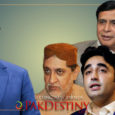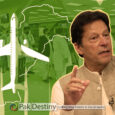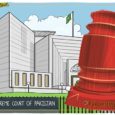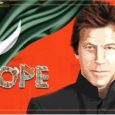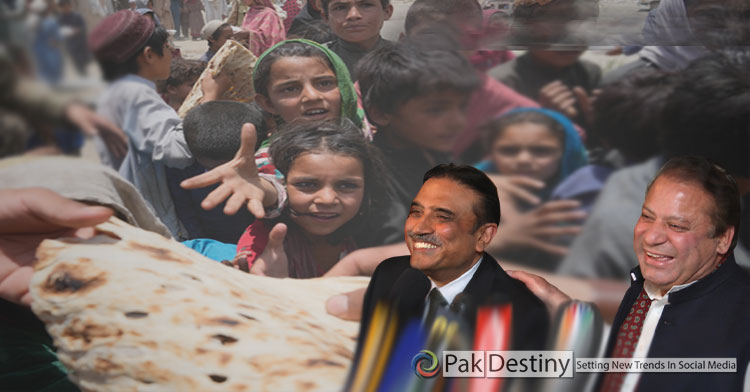
By Raza Ruman
Crushing inflation and PMLN creeping to closer to the establishment for its survival. Will the Sharifs PMLN survive by doing so? A million dollar question.
Dawn’s journalist Arifa Noor in her opinion piece put many pieces together to make sense about political circus at the top level.
She says the election in Punjab may not have caused many ripples earlier but on Sunday night it was watched rather closely. This was the south of Punjab, the land of the electables where much can be managed by the invisible hands, or so we are told. The local strongmen can change sides and the voters follow, à la the children in Pied Piper.
“Most of these strongmen (and a few women) were told to join PTI in 2018 and if the hushed whispers are to be believed, this time they would be guided elsewhere. And we have also heard which way.
However, this shepherding did not take place in Rajanpur once the election was announced due to the death of PTI’s Jaffer Leghari, who held the seat. The Leghari family was already divided here in the sense the PML-N ticket holder was also a Leghari; the grandson of Farooq Leghari. Awais Leghari, Farooq Leghari’s son and the candidate’s father, is a key member of the PML-N.
So once the election was announced, the family was facing each other. The PTI had the advantage of its popularity and that of Jaffer Leghari, and it also used the last few days to allege it was facing great pressure in the constituency. It claimed it was facing arrests, bullying and other strong-arm tactics to discourage its supporters. And that the other side was enjoying the support of the provincial government as well as the local administration.”
Noor further says chances are PML-N will creep closer to the establishment out of fear of its shrinking political space.
The results, however, were in PTI’s favour which managed to get over 50 per cent of the polled vote; the rest of the parties were far behind. The PML-N was second and the PPP a far third. Apart from all else, it doesn’t show the PPP has made a comeback in the province, so far. Also the TLP did not poll impressive numbers.
“With every by-election, it seems the price the PML-N has paid for taking over the government in April 2022 is becoming clearer; which adds to the perception that the party is fearful of elections. It also explains the great pains some of the ministers have gone to, to justify a possible delay in elections. Not that they are alone in wanting this delay.
But how will the PML-N react to this particular election? Chances are it will brush off this win as simply a repeat of the 2018 election, when PTI had won this seat. And then it will go back to its new bayania, or narrative, of the gang of five (which has seen a change of cast, quietly, since it first appeared). Sadly, this election came too soon for anyone, including the PML-N, to judge the effectiveness of its new narrative.
However, the problem is that the PML-N has been here before. The last time it attacked the judiciary before and after Panama, the result was unity among the judges. Will it prove different this time around, especially as the establishment has now switched sides? This week should provide some indication as the proceedings of the case on the elections in KP and Punjab go ahead.”
But more than that, chances are that the PML-N will also creep closer to the establishment out of sheer fear of its shrinking political space. This may not help it much in the long term — for it has never helped any party. From 2018 to 2022, the PTI sat on the same lap, with its support base appearing to be little more than a chimera. And now the PML-N is repeating the same mistakes.
Perhaps all parties should remember the fate of those that which clung too closely to military dictators; the dictators eventually go away but their sahulat kaar (facilitators) struggle to recover their identity in the eyes of the electorate. Think of the Jamaat-i-Islami in the post Zia period and the JI, the JUI-F and PML-Q (both its factions) in the post 2008 period.
This is not to say the PTI is sitting pretty; while it enjoys popular support, its break-up with the establishment continues. And so far, our age-old tradition continues — the road to Islamabad can only be travelled by those who enjoy popular support as well as the approval of the establishment. One without the other doesn’t get a party anywhere, as yet. (And the PPP so far is missing the first part of this outside of Sindh.)
But beyond the fate of our political parties is the question of the entire country, with the continuously worsening economic situation. The state is on the verge of default and the people face crushing inflation.
Meanwhile, the establishment, political parties and the judiciary are locked in a power struggle, which has just led to its latest episode where no one seems to know who or which institution is supposed to announce the election date.
This is just the latest proof of our insanity. The real crisis is our complete inability to make decisions — and nope, this doesn’t refer to the government but the larger issue of political instability and its resolution.
Half the country is decided the elections will be delayed so some difficult decisions of restructuring can be taken (by the PML-N or the imagined technocrats). But they cannot explain why (if this decision has been made) it is being delayed and political uncertainty is ruling the roost, during which time an 80-odd-member cabinet is wasting time and an angry Imran Khan is whipping up emotion.
The other half is convinced that elections cannot be delayed, as they cite the Constitution or the mood on the streets. But they can’t explain why the election is not being announced, so as to end time-wasting and anger-whipping (for lack of a better word).
Is it because they really are that clueless or simply confused? Can we please have a decision, soon!
Pakistan will default if the establishment continues supporting the Sharifs and Zardaris and decsend into anarchy…marks the word! PAK DESTINY


